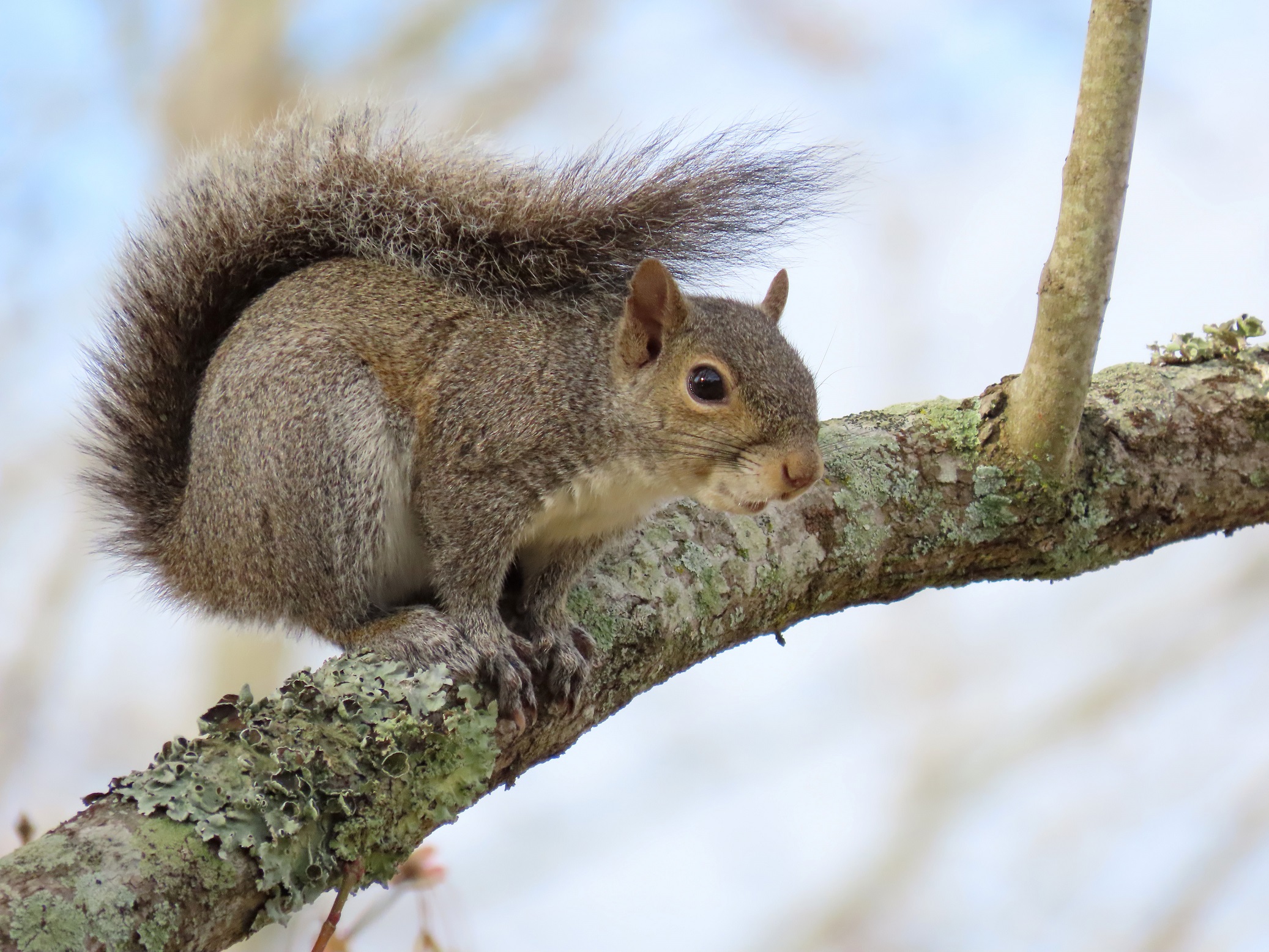



This week for Flora and Fauna Friday it’s everyone favorite tree rat, the Eastern Gray Squirrel (Sciurus carolinensis).
Gray Squirrels are our most common and widespread arboreal rodent in the Southeast. They’re usually about ten inches long (double that with the tail) and weigh a pound. Their coat is a glossy gray with warm-brown accents speckled in a mist of white flecks that radiate from their snowy belly. Like our other two Squirrels they have bushy tails, round ears, big eyes, and eat nuts. Unlike our other squirrels, they also eat pizza and french fries, among many other things. This is because the Eastern Gray Squirrel is a generalist. They live anywhere in this state where seeds and trees exist in the same space. Their diet consists principally of acorns, pine nuts, maple seeds, hickory nuts, sweet gum balls, and any other tree nuts then can get their hands and teeth on. Gray Squirrels access the meaty morsels of nuts using their curved, chisel-like chompers. Like all rodents their incisors are wedge shaped and overlap like sheers, allowing them to forcefully and precisely dismember wood, plastic, and even bone. The diet of the Gray Squirrel is broad and extends far beyond nuts. They also eat fruits, mushrooms, pizza, bark, insects, foliage, birdseed, and skeletons. Bones and shed deer antlers are a favorite snack of squirrels because they’re high in minerals that are often lacking in their regular diets. Their urbanized populations continue to subsist mainly on tree nuts but supplement their meals with discarded pizza crusts, wayward French fries, and as much birdseed as they can funnel down their bottomless gullet in one sitting.
When they’re not bankrupting birdwatchers, Gray Squirrels play a critical role in our forest ecosystems. Gray Squirrels are the number-one disperser of tree seeds to young forests. Gray Squirrels have a habit of collecting and caching nuts in shallow holes underground. This is to hide them from other squirrels and rodents so they may unearth them later in the winter. Sometimes, Squirrels forget where they put their nuts or get eaten before they can disclose the location of their buried treasure. In this scenario, the lost seed can germinate from a cozy soil depth and begin its life as a tree posthaste. Squirrels will often stray far into meadows and clearings to do this and, inadvertently, sow the seeds for a new forest. This is the only efficient way that trees with heavy seeds, like Oaks and Hickories, can spread uphill or past thickets. Gray Squirrels are also an important food source for woodland predators. Species like Red-shouldered Hawks, Gray Foxes, Diamondback Rattlesnakes, Great Horned Owls, Rat Snakes, and Bobcats depend on them as a staple of their diet.